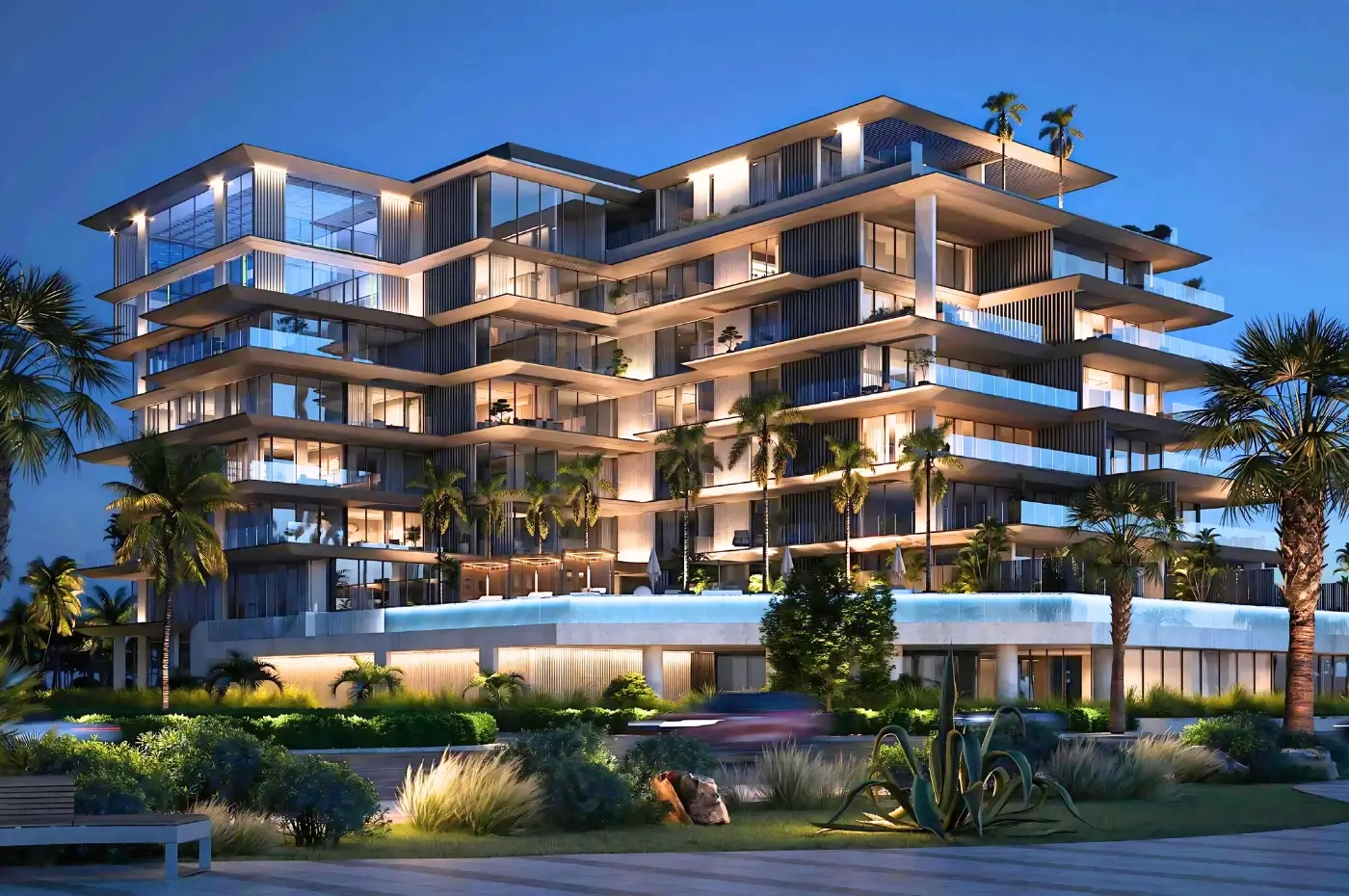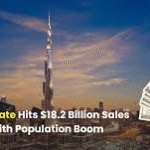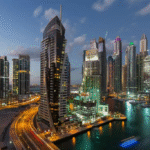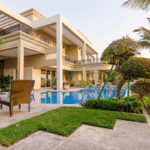Now Reading: Discover Dubai’s New Islands: Bold Ventures Await You
-
01
Discover Dubai’s New Islands: Bold Ventures Await You
Discover Dubai’s New Islands: Bold Ventures Await You
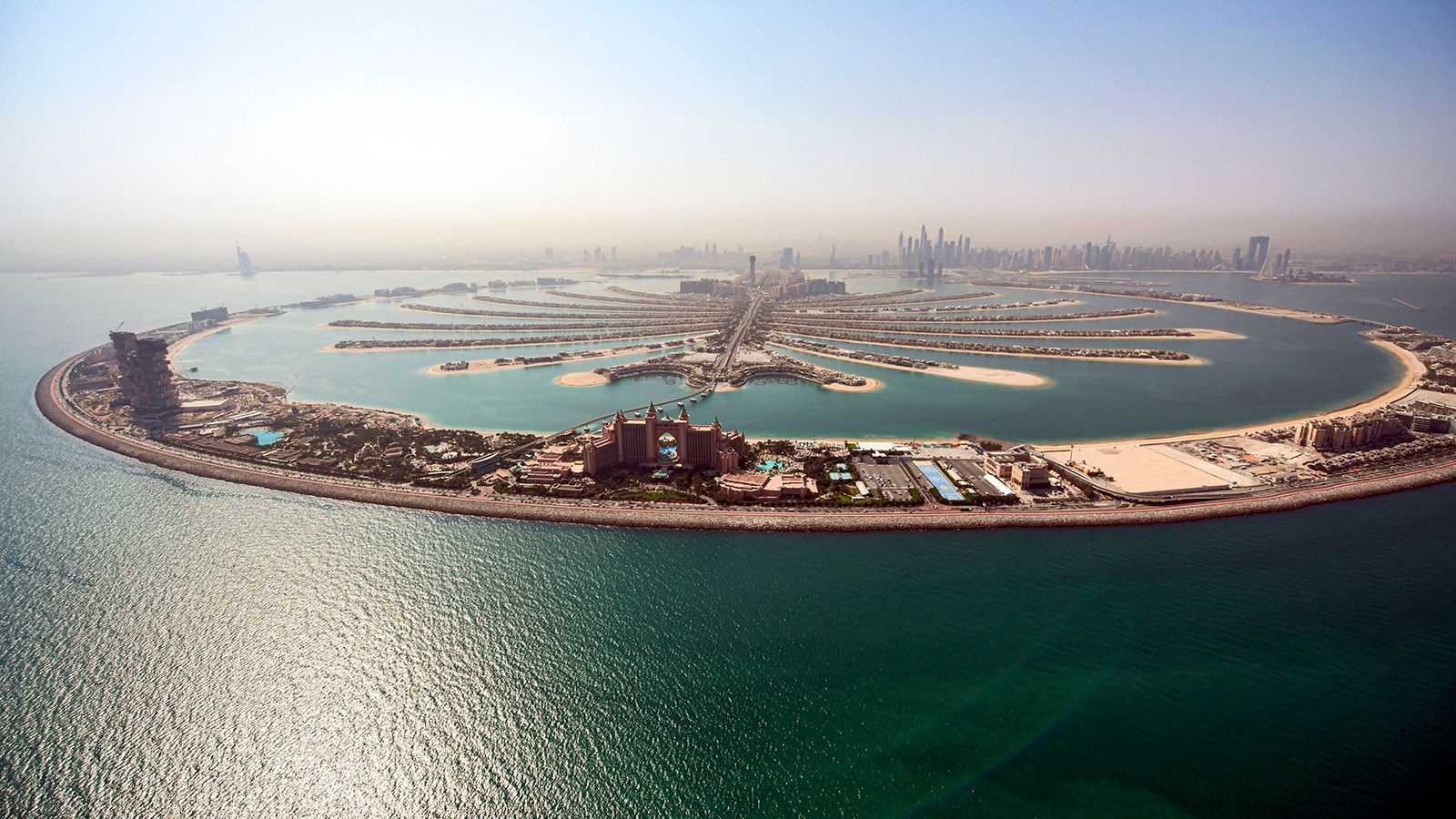
Table of Contents
Imagine stepping onto a pristine, man-made island where turquoise waves lap at your doorstep, luxurious villas gleam under the Dubai sun, and your investment grows in one of the world’s most ambitious real estate markets. In 2025, Dubai’s property scene is buzzing, with 96,000 transactions worth $87 billion in the first half, 58% driven by buyers from the UK, India, Russia, and China. Beyond the iconic Palm Jumeirah and The World Islands, new artificial islands like Naïa Island, Dubai Islands, and the revived Palm Jebel Ali are redefining coastal living.
These projects offer 100% freehold ownership, a dirham pegged to the U.S. dollar, and no personal income tax, capital gains tax, or annual property taxes. With 6-9% rental yields and 8-15% price appreciation, they outperform London (2-4%) and New York (2-3%). Properties over $545,000 qualify for a 10-year Golden Visa, while smaller units grant 2-year residency. Fueled by 25 million tourists and a 4% population surge, these islands are set to become global hotspots. Navigating fees, VAT, and 2025 regulations is key to securing your slice of this coastal dream.
Why Dubai’s New Islands Are a Game-Changer
Located 15-40 minutes from Dubai International Airport via Sheikh Zayed Road or water taxis, these islands offer villas, apartments, and resorts with vacancy rates of 2-3%, compared to 7-10% globally. You keep 100% of rental income $24,000-$120,000 annually on $400,000-$5 million properties versus $13,200-$72,000 elsewhere after taxes.
Zero capital gains tax saves $24,000-$300,000 on $120,000-$1.5 million profits, and no property taxes save $4,000-$50,000 yearly, unlike London’s council tax (up to 2%) or New York’s property tax (1-2%). Residential purchases skip 5% VAT ($20,000-$250,000), and the Golden Visa boosts residency appeal. With private beaches, marinas, and eco-conscious designs, these islands deliver 8-15% price growth, blending luxury with strong returns.
Living on these islands feels like embracing a bold new horizon.
No Personal Income Tax: Rentals That Spark Prosperity
These islands impose no personal income tax, letting you keep every dirham, unlike the U.S. (up to 37%) or UK (up to 45%). A $400,000 Dubai Islands apartment yields $24,000-$36,000, saving $8,880-$16,200; a $5 million Naïa Island villa yields $120,000-$150,000, saving $54,000-$67,500. Short-term rentals, driven by 25 million tourists visiting nearby Burj Al Arab, require a DTCM license ($408-$816), boosting yields by 10-20% ($2,400-$30,000).
Long-term leases, popular with families on Palm Jebel Ali, need Ejari registration ($54-$136) for stability. Non-compliance risks fines up to $13,612, so licensing is essential. Smart home systems and AI-driven pricing tools maximize profits, especially for tourist-heavy rentals.
Tax-free rentals feel like a monthly wave of wealth.
Zero Capital Gains Tax: Profits That Flow Freely
These islands offer zero capital gains tax, letting you keep 100% of sale profits. Selling a $400,000 Dubai Islands apartment for $500,000 (25% appreciation) yields a $100,000 tax-free profit, saving $20,000-$28,000 versus London (20-28%) or New York (20-37%). A $5 million Naïa Island villa sold for $6.25 million delivers a $1.25 million tax-free gain, saving $250,000-$350,000. Price growth of 8-15% is fueled by waterfront scarcity and global demand. A 4% DLD fee ($16,000-$200,000), often split, applies, but tax-free profits make these islands a wealth-building paradise.
Keeping every dirham feels like a financial celebration.
No Annual Property Taxes: Ownership That Feels Light
Unlike global markets, these islands have no annual property taxes, saving $4,000-$50,000 yearly on $400,000-$5 million properties versus London’s council tax ($8,000-$100,000) or New York’s property tax (1-2%). Maintenance fees range from $5,000-$25,000, covering marinas and green spaces, higher than mainland fees ($2,000-$20,000) due to premium amenities. A 5% municipality fee on rentals ($1,200-$7,500) applies, reasonable for luxury areas. These costs make ownership sustainable, enhancing investment appeal.
No property taxes feel like a warm embrace for your coastal home.
VAT Rules: A Savvy Investor’s Edge
Residential purchases skip 5% VAT, saving $20,000-$250,000 on $400,000-$5 million properties, unlike commercial properties or the UK’s stamp duty (up to 12%, or $48,000-$600,000). Off-plan purchases, common on Dubai Islands and Palm Jebel Ali, incur 5% VAT on developer fees ($4,000-$100,000), recoverable via Federal Tax Authority (FTA) registration ($500-$1,000).
Short-term rental operators must register for VAT if revenue exceeds $102,041, charging 5% but claiming credits on DTCM fees ($408-$816). A $400,000 apartment yielding $24,000-$36,000 incurs $1,200-$1,800 in VAT, with $400-$800 in credits; a $5 million villa yielding $120,000-$150,000 incurs $6,000-$7,500 in VAT, with $2,000-$3,000 in credits. Non-compliance risks fines up to $13,612, so careful records are crucial.
VAT exemptions feel like a clever boost to your profits.
DLD Fees and Title Deeds: Securing Your Island Haven
The 4% DLD fee, typically split, applies: $16,000 for a $400,000 Dubai Islands apartment or $200,000 for a $5 million Naïa Island villa. Gift transfers to family or shareholders reduce DLD to 0.125%, saving $15,500-$193,750. For example, gifting a $5 million villa cuts DLD from $200,000 to $6,250. Title deed issuance costs $136-$272, requiring DLD registration. Broker fees, typically 2% ($8,000-$100,000), may be waived for off-plan projects like Azura Residences. Mortgage registration (0.25% of the loan, or $1,000-$12,500) and valuation fees ($680-$1,360) apply for financed deals. The 2025 Oqood system ensures escrow compliance for off-plan purchases, protecting your investment.
Title deeds feel like the key to your island sanctuary.
Corporate Tax: A Business Buyer’s Note
The 9% corporate tax, introduced in 2023, applies to businesses with profits over $102,110. A company leasing a $400,000 Dubai Islands apartment yielding $24,000-$36,000 faces a 9% tax ($2,160-$3,240), reducing net income to $21,840-$32,760. A $5 million Naïa Island villa yielding $120,000-$150,000 incurs $10,800-$13,500 in tax. Qualified Free Zone Person (QFZP) status in areas like Dubai Multi Commodities Centre (DMCC) avoids this, saving $3,060-$36,000, with setup costs of $2,000-$5,000. Small business relief waives corporate tax for revenues under $816,000 until December 31, 2026. Individual ownership skips this tax, ideal for most investors.
Corporate tax feels like a wave you can easily sidestep.
New Tax Rules for 2025
The Domestic Minimum Top-up Tax (DMTT), effective January 1, 2025, imposes a 15% tax on multinationals with revenues over €750 million ($793 million). Individual investors and smaller entities are unaffected, and QFZP status avoids DMTT, saving $3,060-$36,000. Cabinet Decision No. 34 refines Qualifying Investment Fund (QIF) rules, exempting corporate tax if real estate income is below 10%. A QIF earning $1 million, with $100,000 from rentals, faces 9% tax ($8,100) on 90% ($900,000). A July 2025 policy allows corporate tax deductions on fair market value depreciation, saving $1,091-$9,000 annually for a $1 million property revalued at $1.25 million.
New rules feel like a puzzle with prosperous solutions.
Dubai’s Hidden Island Gems
1. Naïa Island: A Low-Rise Luxury Retreat
Naïa Island, just off Jumeirah’s coastline near Burj Al Arab, is a sleek, low-rise haven by Shamal Holding, set for completion by 2029. Priced at $2 million-$5 million, its villas and suites, including the Middle East’s first Cheval Blanc maison, offer 6-8% yields and 10-15% price growth. A $2 million villa yields $80,000-$120,000 tax-free, saving $36,000-$48,000. Selling for $2.5 million yields a $500,000 tax-free profit, saving $100,000-$140,000. No property taxes save $20,000-$50,000, and VAT exemption saves $100,000. Maintenance fees are $15,000-$25,000, with a 5% municipality fee ($4,000-$6,000). QFZP saves $12,240-$36,000. U.S. investors deduct depreciation ($36,364-$90,909), saving up to $31,818. Its green corridors and private beaches attract ultra-luxury buyers.
Naïa Island feels like a serene, exclusive escape.
2. Dubai Islands: A Smart Coastal Hub
Dubai Islands, formerly Deira Islands, spans 17 km² with five isles (Elite, Central, Marina, Golf, Shore). Priced at $400,000-$2 million, projects like Azura Residences offer 7-10% yields and 8-12% price growth, with Blue Flag beaches and Deira Mall nearby. A $400,000 apartment yields $24,000-$36,000 tax-free, saving $8,880-$16,200.
Selling for $500,000 yields a $100,000 tax-free profit, saving $20,000-$28,000. No property taxes save $4,000-$20,000, and VAT exemption saves $20,000. Maintenance fees are $5,000-$12,000, with a 5% municipality fee ($1,200-$1,800). QFZP saves $3,060-$19,440. U.S. investors deduct depreciation ($7,273-$36,364), saving up to $12,727. Its smart tech and accessibility draw diverse buyers.
Dubai Islands feels like a vibrant, connected paradise.
3. Palm Jebel Ali: The Revived Giant
Palm Jebel Ali, twice the size of Palm Jumeirah, is back on track for 2025-2026 completion, offering villas at $2 million-$5 million with 6-8% yields and 10-15% price growth. A $2 million villa yields $80,000-$120,000 tax-free, saving $36,000-$48,000. Selling for $2.5 million yields a $500,000 tax-free profit, saving $100,000-$140,000. No property taxes save $20,000-$50,000, and VAT exemption saves $100,000. Maintenance fees are $15,000-$25,000, with a 5% municipality fee ($4,000-$6,000). QFZP saves $12,240-$36,000. U.S. investors deduct depreciation ($36,364-$90,909), saving up to $31,818. Its eco-friendly smart homes attract high-net-worth families.
Palm Jebel Ali feels like a majestic, sustainable haven.
Why These Islands Shine
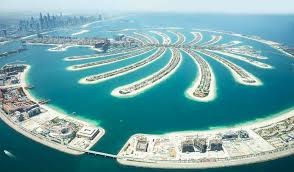
Price Range: Dubai Islands ($400,000-$2 million) suits mid-range buyers; Naïa Island and Palm Jebel Ali ($2 million-$5 million) target luxury investors.
Rental Yields: 6-10%, with Dubai Islands at 7-10% for short-term rentals (10-20%, $2,400-$7,200); Naïa and Palm Jebel Ali at 6-8% for stable leases.
Price Appreciation: 8-15%, with Naïa and Palm Jebel Ali at 10-15% due to exclusivity.
Lifestyle: Private beaches, smart tech, and eco-conscious designs create luxurious living.
Amenities: Marinas, resorts, and proximity to Burj Al Arab enhance appeal.
ROI Verdict: 8-12% ROI, driven by high yields and strong appreciation.
Investing feels like claiming a piece of Dubai’s coastal future.
Strategies to Maximize Returns
For individuals: First, hold properties personally to avoid corporate taxes, saving $3,060-$36,000. Second, negotiate DLD fee splits, saving $8,000-$100,000. Third, use gift transfers to reduce DLD to 0.125%, saving $15,500-$193,750. Fourth, recover 5% VAT on developer fees via FTA registration ($500-$1,000). Fifth, leverage double taxation treaties with 130+ countries, saving $8,880-$67,500.
Sixth, U.S. investors deduct depreciation ($7,273-$90,909), saving up to $31,818. For corporates: Secure QFZP status, keep QIF income below 10%, and claim depreciation deductions. Hire property managers ($5,000-$25,000 annually) and tax professionals ($1,000-$3,000) to avoid fines up to $136,125. Focus on short-term rentals for maximum yields.
These strategies feel like a roadmap to your island wealth.
Risks to Watch in 2025
A projected oversupply of 182,000 units by 2026 may slightly slow price growth in Dubai Islands, but Naïa and Palm Jebel Ali’s exclusivity mitigates this. Off-plan delays risk setbacks, so choose trusted developers like Nakheel or Shamal and verify escrow compliance via the 2025 Oqood system.
Non-compliance with VAT or DTCM rules risks fines up to $13,612, and corporate tax errors can cost $136,125. Indian investors must report properties in India’s Foreign Asset schedule to avoid $135,000 penalties. Environmental concerns, like marine ecosystem impacts, require sustainable practices, which these projects prioritize. Currency fluctuations, like a 5% dirham shift, could impact returns.
Why These Islands Are Worth It
From Naïa Island’s low-rise luxury to Dubai Islands’ smart hub, these projects offer 8-12% ROI, 8-15% growth, and tax-free savings of $4,000-$300,000 annually. With Golden Visa perks, 80-85% rental occupancy, and a glamorous coastal lifestyle, they’re prime investment choices. Navigate fees, choose your island, and invest in Dubai’s bold new shores in 2025.




